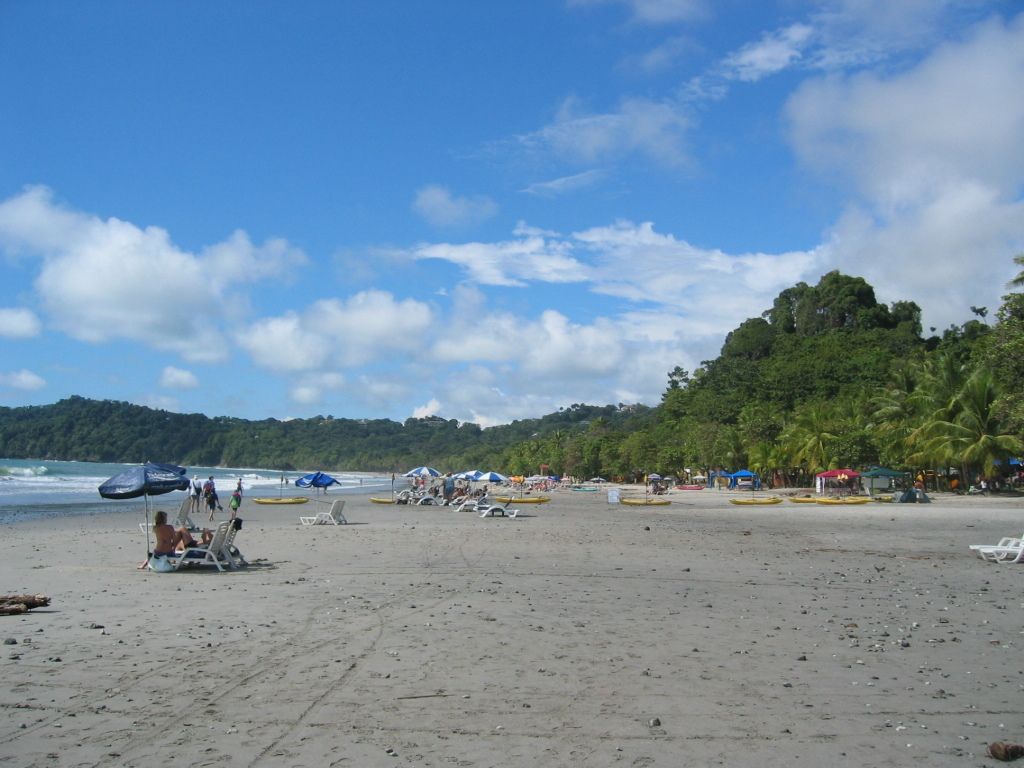Embracing Outdoor Activities: Adventurous Way to Master English Skills
In the spirit of learning English, let's swap the classroom for the great outdoors by using hiking and adventure sports as a means of cultural immersion and language acquisition. This one-of-a-kind approach delivers an exciting environment that not just enhances your language skills but also broadens your cultural understanding. The thrill of nature and the adrenaline rush from adventure sports offer unique opportunities to interact with native speakers and experience the language in its purest, everyday form.
Picture hiking along the Appalachian Trail, discussing the jaw-dropping landscapes with fellow travelers or exchanging stories about wildlife and best trails while on the move. Or envision yourself scaling the Rockies, learning technical terms associated with the sport, and sharing tales of adventure around glowing campfires. These experiences propel you out of your comfort zone, enveloping you in a universe where English becomes more than just a subject of study; it becomes a vital tool for communication and survival.
As an ESL learner, traditional classrooms can sometimes feel rigid and monotonous. Hiking and adventure sports revitalize learning, providing a captivating alternative. The blend of physical activity and language practice speaks directly to kinesthetic and experiential learners, often resulting in better retention and practical language use.
Let's take a dive into why this stylish language learning method is more than just appealing.
🌄 Why Adventure Language Learning?
Hiking and adventure activities circumvent the limitations of conventional classrooms by offering a practically immersive environment that encourages real-time language use. This pragmatic approach strengthens vocabulary acquisition and solidifies grammar understanding as learners navigate conversations, read trail maps, and follow guides in English.
Moreover, such activities are inherently social. Group dynamics are essential, fostering endless opportunities for ESL learners to practice English through conversations about the natural world, collaborative efforts, and sharing personal stories, thereby enhancing fluency and confidence.
You'll also find that the physical aspects of these activities offer numerous benefits. Physical movement stimulates cognitive functions, improving language learning efficiency while exposing learners to a rich tapestry of vocabulary and situational contexts.
🌲 Creating a Language Jungle
To reap the most benefits from learning English through adventure, it's crucial to immerse yourself in rich language environments. Start by choosing destinations where English is the lingua franca. Parks located in English-speaking countries like the USA, Canada, or Australia are brimming with hiking trails and adventure sports venues that are perfect for this purpose.
When in the great outdoors or participating in activities like rock climbing, rafting, or mountain biking, actively seek conversational opportunities with native speakers. Ask for directions, engage in guided tours, and participate in group discussions about the local flora, fauna, and geographical features. Capitalize on informational signage, brochures, and maps to build your reading comprehension skills in authentic, real-world contexts.
Try joining local hiking clubs or outdoor adventure groups. These communities often enthusiastically welcome new members and are excellent platforms for regular language practice and making meaningful connections.
🛰️ Integrating Language and Motion
Mixing physical activity with language learning can create a mesmerizing symphony of education. Leverage the natural surroundings as a backdrop for language exercises like describing landscapes, naming plants and animals, or discussing weather conditions. Practicing language in context makes vocabulary more memorable and relevant.
During adventure sports, the specific terminology related to the activity offers a bounty of fresh vocabulary. Mastering communication instructions, safety protocols, and technical details in English can significantly boost both language proficiency and confidence. What's more, activities like rock climbing or kayaking, where precise communication is vital, ensure that learners pay meticulous attention to language details and accuracy.
To reinforce language skills, consider maintaining a journal of your escapades. Writing about your experiences not only refines your writing abilities but also offers an opportunity to reflect on and internalize what you've learned. Recording new words, phrases, and interactions makes for a valuable resource for future reference and review.
🌴 Cultural Oasis
Immersing yourself in a new culture enriches language learning immensely. Engaging with local traditions, understanding regional histories, and taking part in cultural practices imbue language learning with context. This understanding deepens comprehension and fosters a deeper appreciation and comprehension of the nuances of the English language.
For instance, hiking in New England might lead to learning about the historical significance of the Appalachian Trail or the indigenous tales associated with specific landscapes, making the learning experience more engaging and meaningful. Attending local festivals, sampling traditional food, and listening to local music further immerses you in the cultural fabric of the community, creating a holistic language learning experience.
On top of that, cultural immersion aids in grasping idioms, regional dialects, and colloquial expressions, all of which are often challenging for language learners. Better understanding these language elements opens the door to navigating various social scenarios more easily. It bridges the gap between textbook learning and real-world usage, making learners more adept at navigating diverse social and cultural environments.
🛠️ Tips for Success
To succeed in learning English through adventure, it requires a well-thought-out strategy:
- Plan Ahead: Research your destination, familiarize yourself with language and vocabulary related to the activities, and learn about local customs and traditions.
- Stay Motivated: Celebrate small successes, like mastering new vocabulary or successfully conversing with a local, and continuously set achievable language learning goals for each adventure.
- Engage Fully: Embrace every opportunity for conversation in English, even if it feels daunting. The more you practice, the more confident you become.
- Utilize Technology: Employ language learning apps and translation tools to assist communication and enhance learning throughout your adventures.
- Reflect and Review: Keep a journal of your adventures, reflect on what you've learned, and review your notes consistently to fortify language acquisition.
By adhering to these tips, you can transform your language learning journey through hiking and adventure sports into a thrilling, enjoyable, and enriching experience. Venture forth, embrace the challenges, and immerse yourself in the adventure – your classroom is now the wild outdoors!
🎓 Conclusion
To sum it up, learning English through hiking and adventure sports offers a rejuvenating and productive way to hone language skills. Combining physical activity, cultural immersion, and real-world language use fosters a dynamic and engaging learning environment. By actively participating in these activities, learners enhance their language skills, gain valuable cultural insights, and create unforgettable memories.
The benefits of this unique approach are numerous. From improved vocabulary and comprehension to increased confidence and fluency, the advantages stretch far beyond traditional classroom learning. The experiential nature of hiking and adventure sports ensures that language learning is more than an academic exercise – it's a fun and exciting journey tailored to the great outdoors and packed with excitement. So, grab your hiking boots, pack your adventure gear, and embark on a linguistic expedition like no other. The Great Outdoors awaits!
🤓 Frequently Asked Questions
Q: How can hiking and adventure sports help in learning English?
A: Hiking and adventure sports break free of the limitations of traditional classrooms by offering a practically immersive environment for language practice. Real-life situations encountered during outdoor activities provide opportunities for learners to communicate, ask questions, and receive feedback, making language acquisition more organic.
Q: What level of English proficiency is necessary to start language learning through hiking and adventure sports?
A: This approach can cater to language learners of almost any proficiency level. If you're a novice, focus on basic greetings and common phrases related to the activity. More advanced learners can master idiomatic expressions, regional dialects, and improve their practice through long, engaging conversations.
Q: What kinds of adventure sports can I experience to practice English?
A: The world of adventure sports is varied, offering numerous avenues for English practice. Popular activities include rock climbing, trail running, white-water rafting, and mountain biking. Each sport offers unique challenges that necessitate clear, concise communication.
Q: How can I prepare for a language learning session through hiking or adventure sports?
A: Research the specific language and vocabulary related to the sport or activity you intend to engage in. Familiarize yourself with local customs and cultural nuances, and set achievable language learning goals for each trip. Keep a notebook or use a digital device to record new words and expressions, ensuring that you can review and reinforce what you learned after the activity.
Q: Can I deepen my cultural understanding while enhancing my English skills through adventure sports and hiking?
A: Absolutely! Participating in hiking and adventure sports exposes learners to diverse settings, fostering endless opportunities for cross-cultural dialogues and experiences. By partaking in activities alongside locals, learning about regional history, and appreciating local traditions, learners gain a holistic understanding of the cultures they encounter on their linguistic expedition.
Reading comprehension activities can be integrated into lifestyle choices like hiking and adventure sports to promote education-and-self-development. As one explores the Rockies or treks along the Appalachian Trail, reading trail maps, participating in guided tours, and engaging in conversations about the natural world helps enhance reading comprehension.
Incorporating sports into learning English offers unique chances to interact with native speakers and experience the language in everyday contexts. For example, rock climbing or kayaking, sports that require precise communication, aid English learners in paying close attention to language details and accuracy, thereby improving their overall language proficiency.







